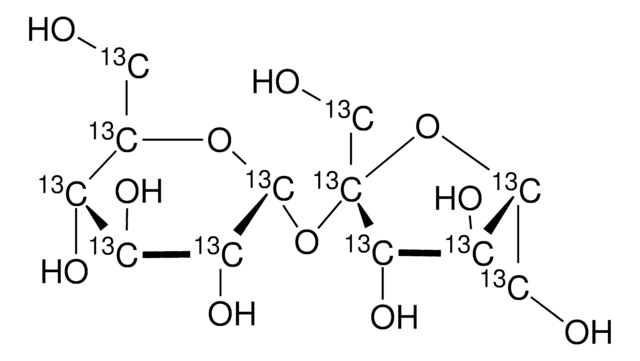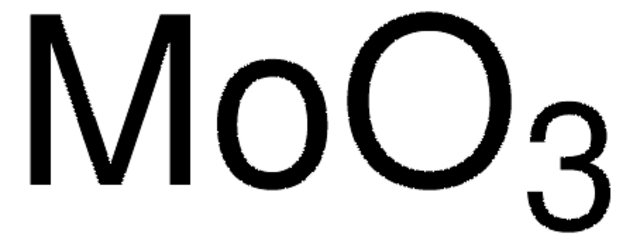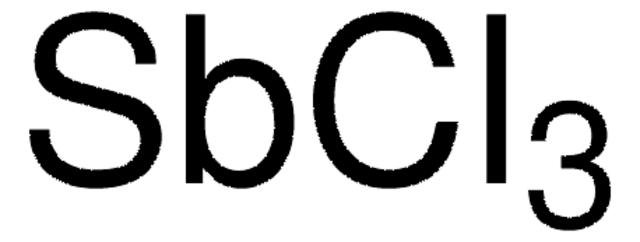637173
Antimony(III) oxide
nanopowder, <250 nm particle size (TEM), ≥99.9% trace metals basis
Synonyme(s) :
Diantimony trioxide
About This Item
Produits recommandés
Pureté
≥99.9% trace metals basis
Forme
nanopowder
Pertinence de la réaction
reagent type: catalyst
core: antimony
Superficie
15.6 m2/g , typical
Taille des particules
<250 nm (TEM)
Point d'ébullition
1550 °C (lit.)
Pf
655 °C (lit.)
Masse volumique apparente
0.5‑0.6 g/mL
Chaîne SMILES
O=[Sb]O[Sb]=O
InChI
1S/3O.2Sb
Clé InChI
ADCOVFLJGNWWNZ-UHFFFAOYSA-N
Vous recherchez des produits similaires ? Visite Guide de comparaison des produits
Mention d'avertissement
Warning
Mentions de danger
Conseils de prudence
Classification des risques
Carc. 2
Code de la classe de stockage
11 - Combustible Solids
Classe de danger pour l'eau (WGK)
WGK 1
Point d'éclair (°F)
Not applicable
Point d'éclair (°C)
Not applicable
Équipement de protection individuelle
Eyeshields, Gloves, type P3 (EN 143) respirator cartridges
Faites votre choix parmi les versions les plus récentes :
Déjà en possession de ce produit ?
Retrouvez la documentation relative aux produits que vous avez récemment achetés dans la Bibliothèque de documents.
Les clients ont également consulté
Notre équipe de scientifiques dispose d'une expérience dans tous les secteurs de la recherche, notamment en sciences de la vie, science des matériaux, synthèse chimique, chromatographie, analyse et dans de nombreux autres domaines..
Contacter notre Service technique









